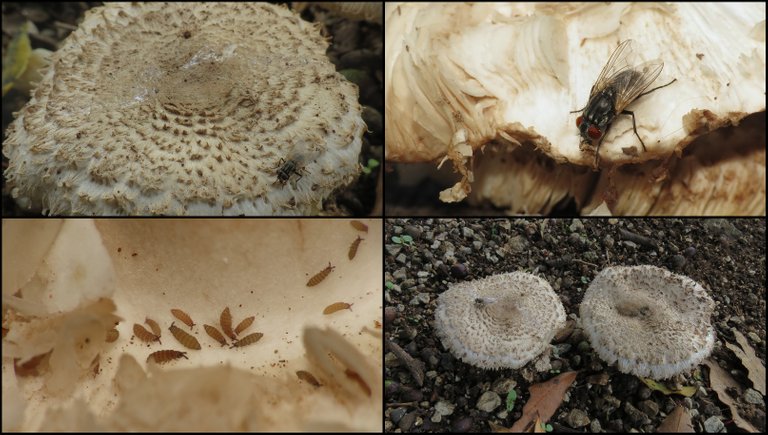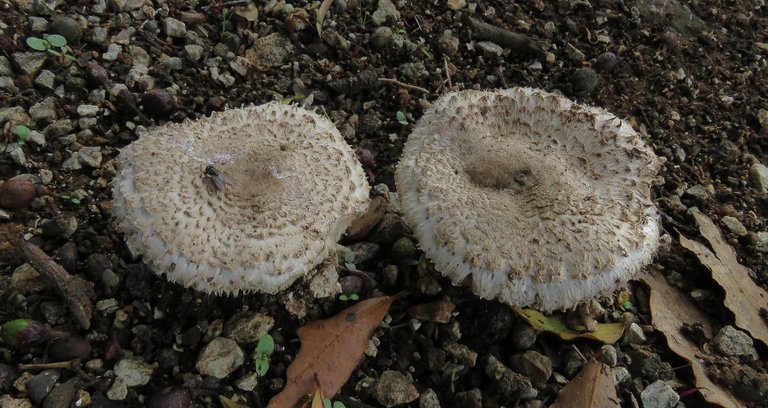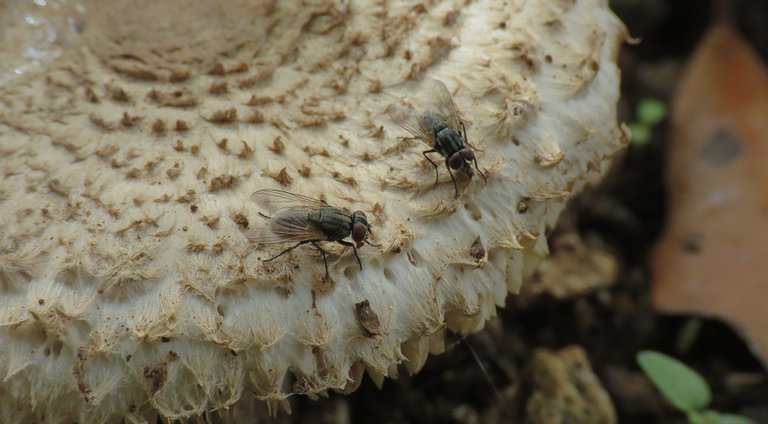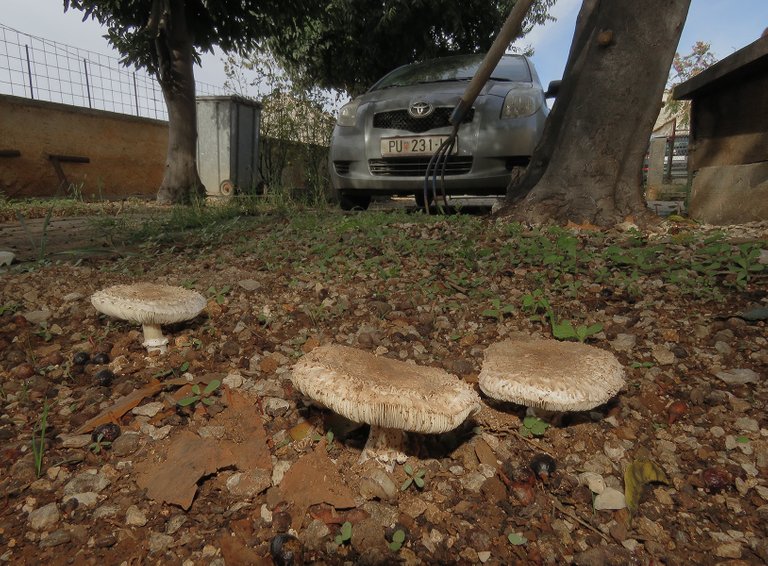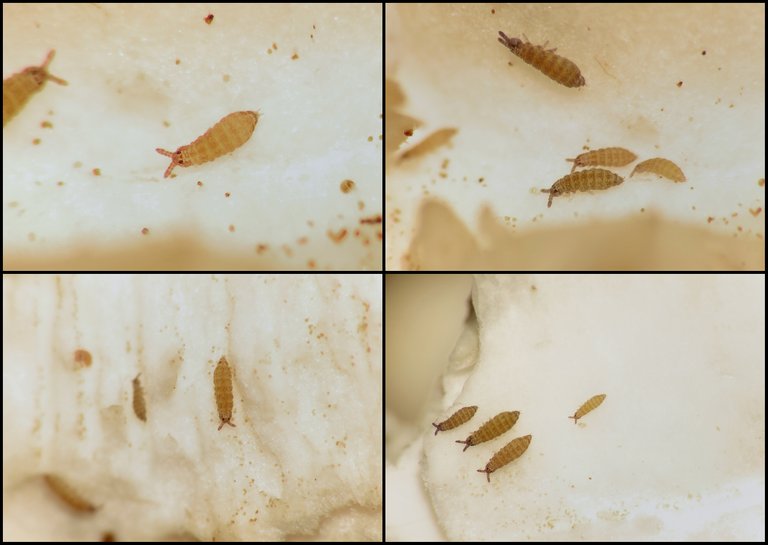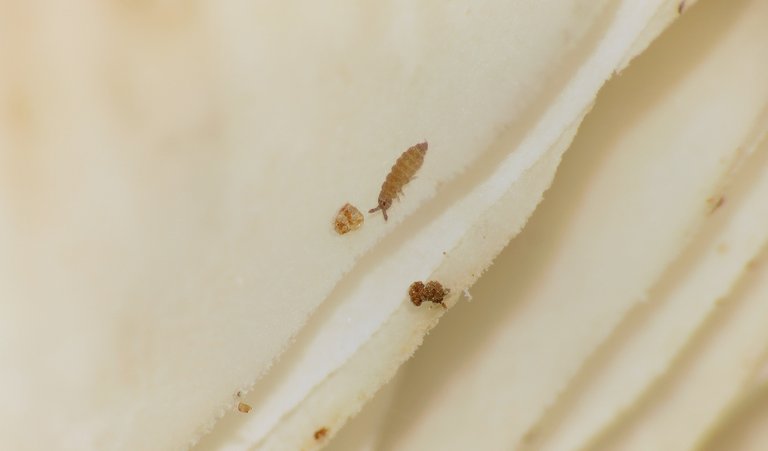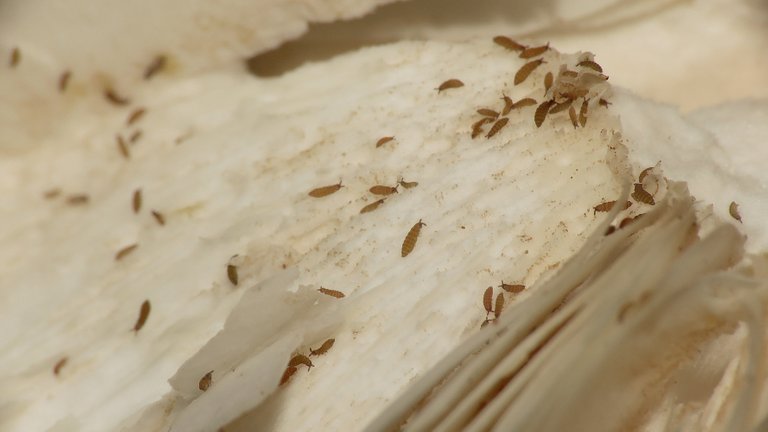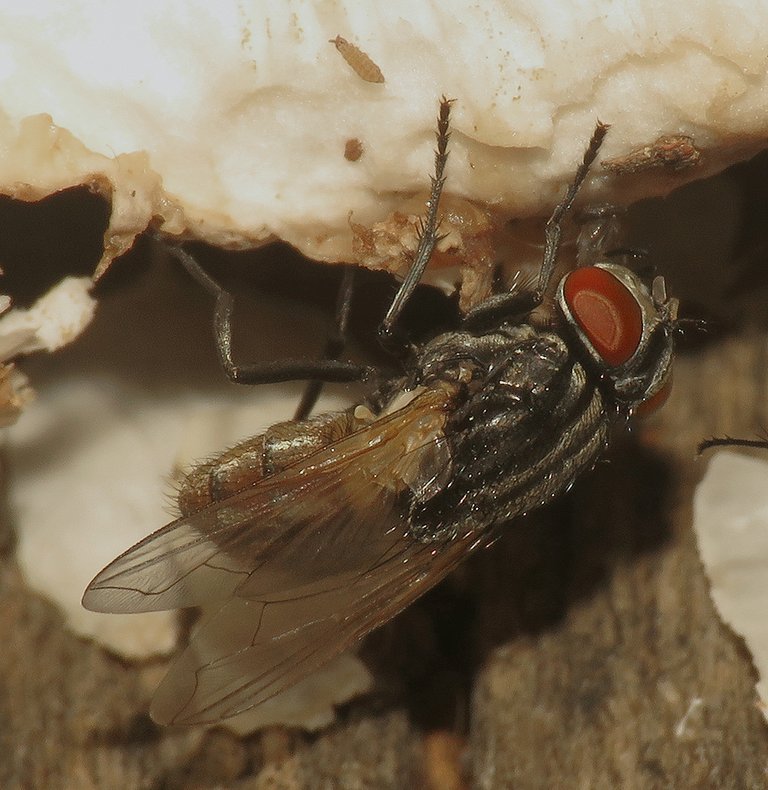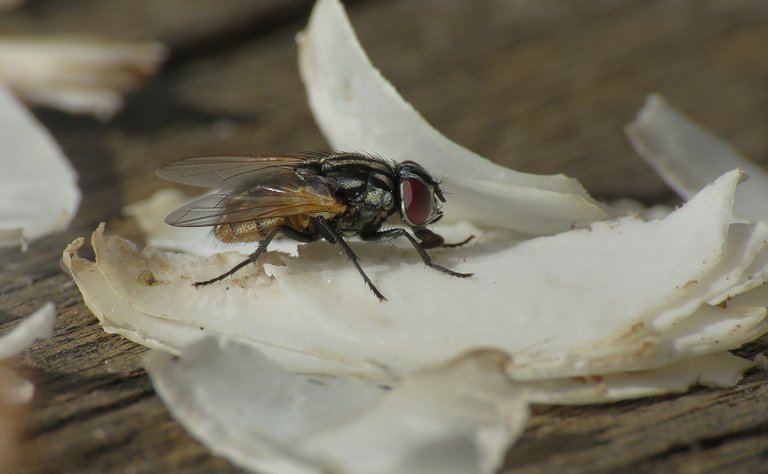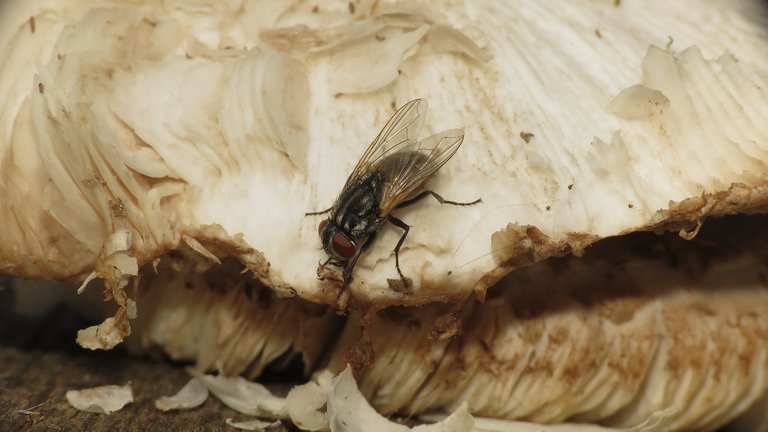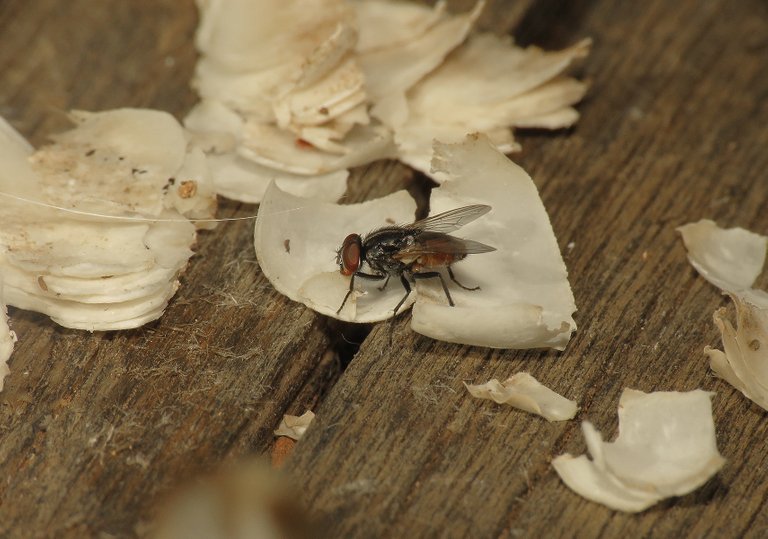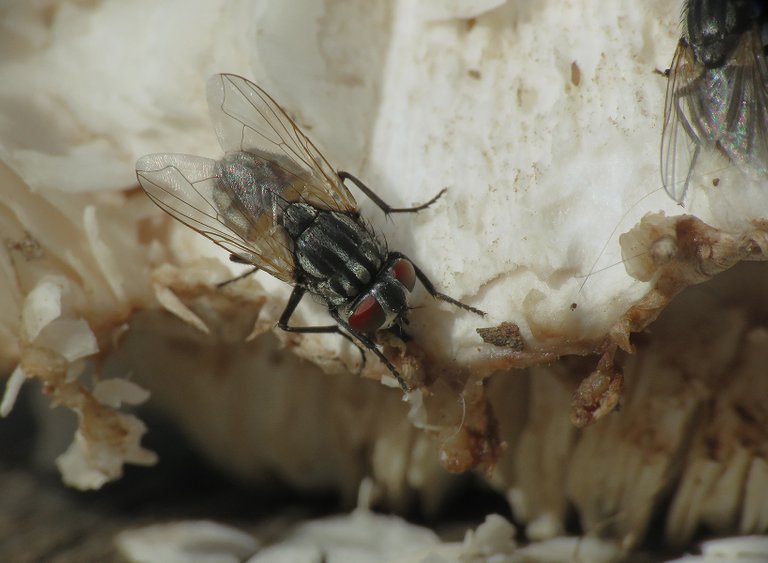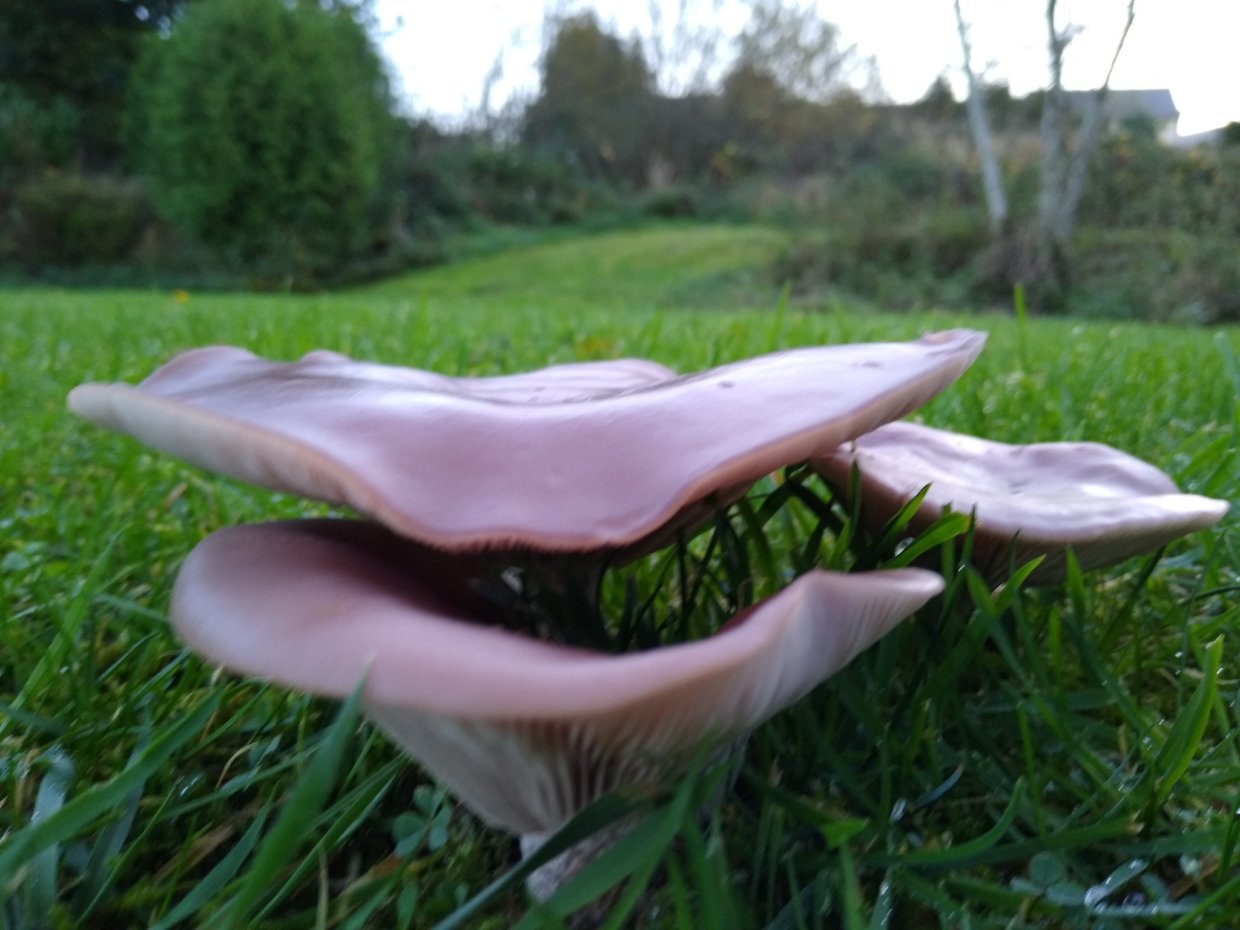Most of the time I search for the mushrooms that end up in these Friday posts. I drive around. I walk across the meadows and through the woods. But this time, things went in a different way.
Mushrooms came to me.

I walked out of the house, locked the door ready to enter the car, and drive away when I saw four mushrooms just a meter or two from the place in which my car was parked.
These are the shaggy parasols (Chlorophyllum rhacodes) and the post is my contribution to FungiFriday by @ewkaw
The day was cloudy, warm, and humid, so there was an abundance of flies in and outside the house. Some of them were exploring the mushrooms.
Here you can see both sides of the cap. To get the photograph on the right, I had to pick and ruin one of those four fruiting bodies.
At this point, only three Chlorophyllum rhacodes remained, and I thought that this will be a very short post that would end more or less here, but ...
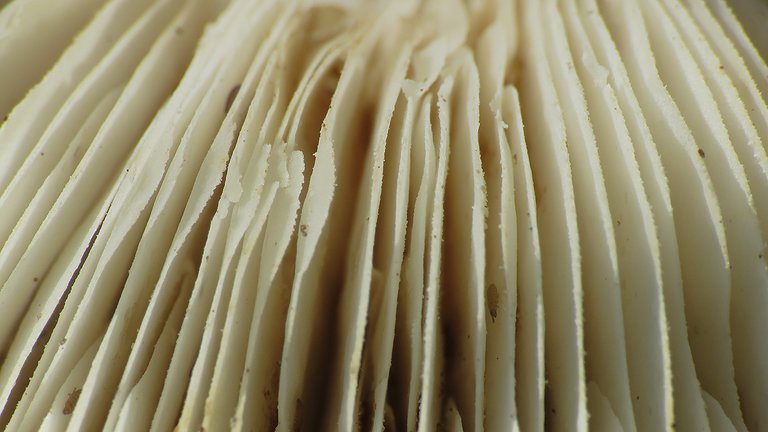
... but, while holding the cap I picked before, it came to my mind that I could break it into smaller pieces to see if I can find some interesting macro stuff hidden in between the gills and in the soft spongy tissue above them.
It was a good decision.
These are springtails.
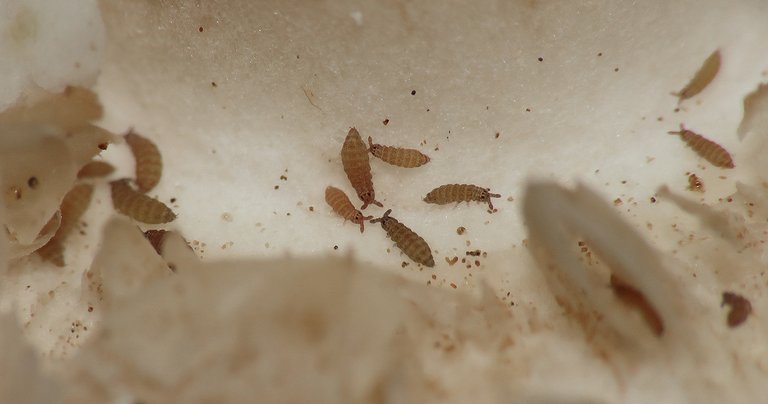
I can't tell you the name of the species ...
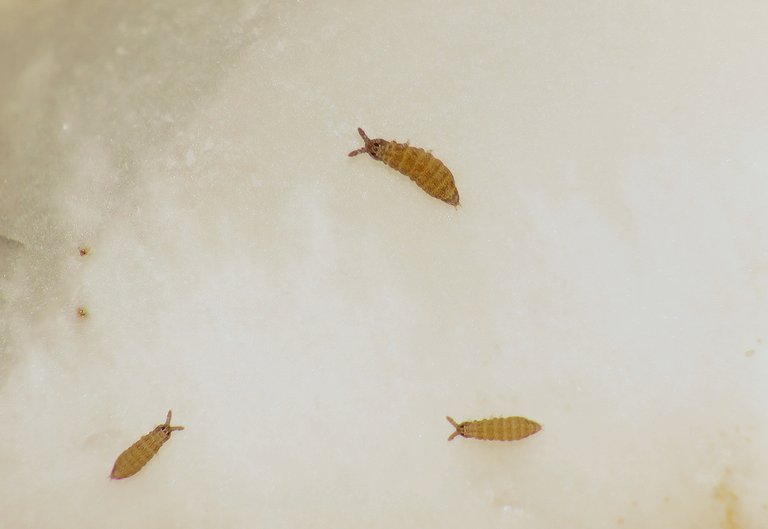
... but the genus is definitively Ceratophysella.
The family is Hypogastruridae.
The white surface of the gills and the spongy meat of the cap were a great background for photographing these minuscule creatures.
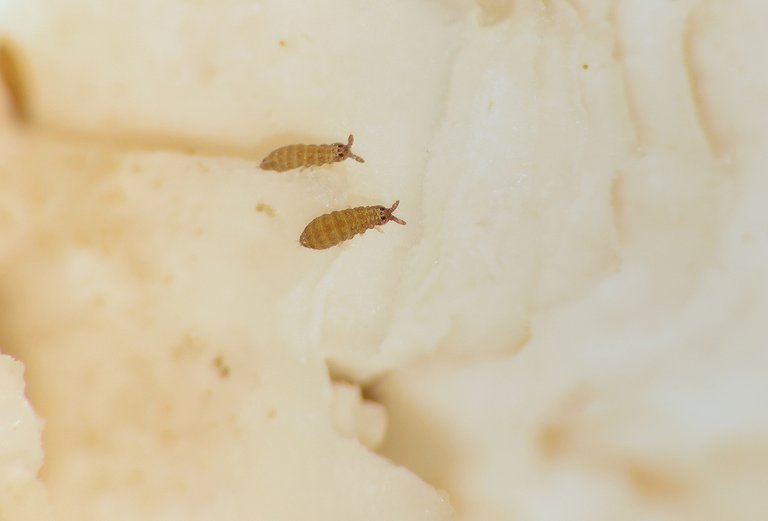
Springtails are hexapods closely related to insects. They share many traits with insects, like the three pairs of legs, but there is enough difference about springtails to make them their own class. The class Collembola.
I found plenty of them on this occasion ...
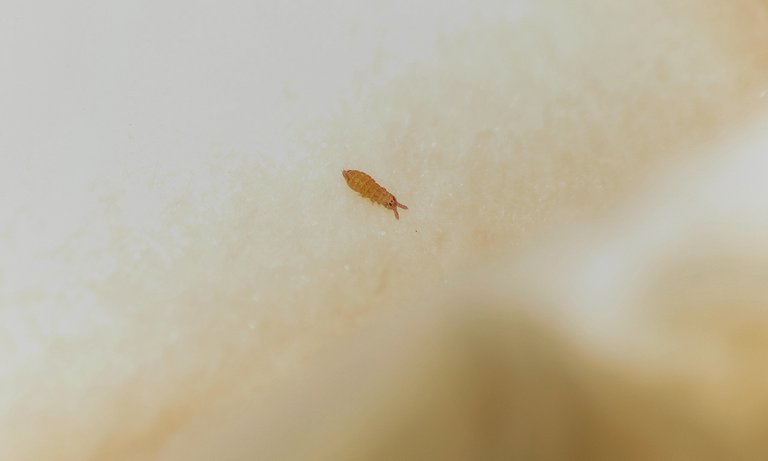
... and I had plenty of fun following them through the macro lens.
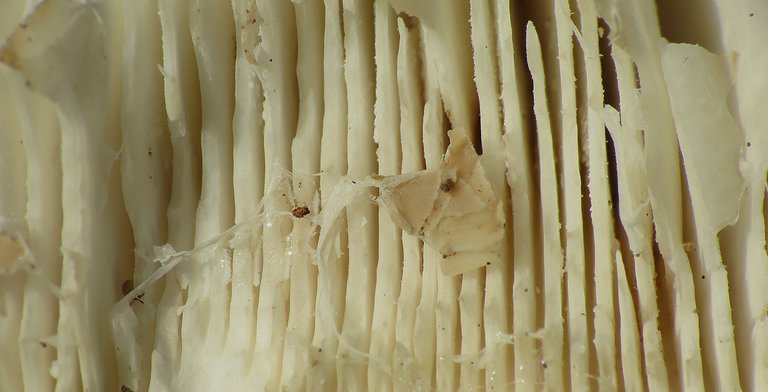
While I was photographing the springtails ...
... the flies were also there.

Musca domestic, the very common houseflies from the Muscidae family aren+t particularly big flies ...
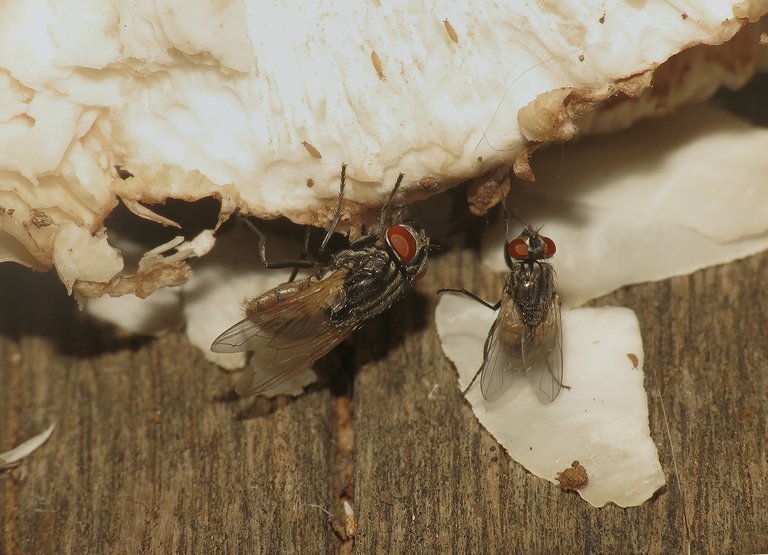
... but when compared with the springtails ...
... they look like giants. Here you can take a good look at the difference in size. The fly and the springtail are near each other.
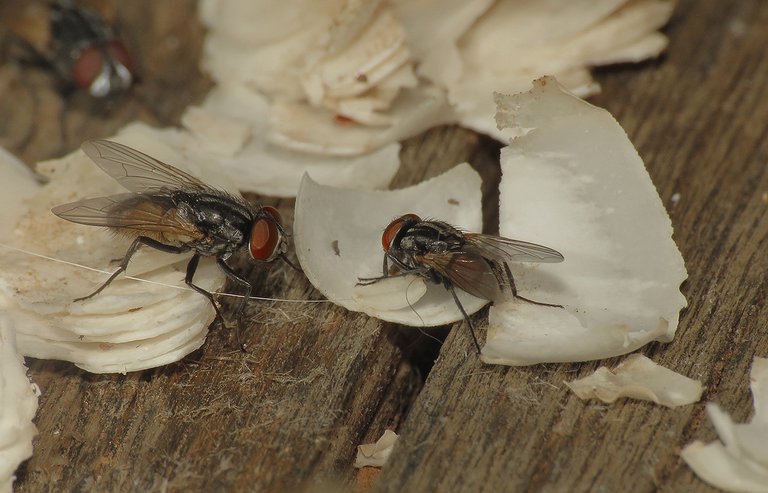
I followed the fly for at least half an hour or so ...
... and I took plenty of photographs ...
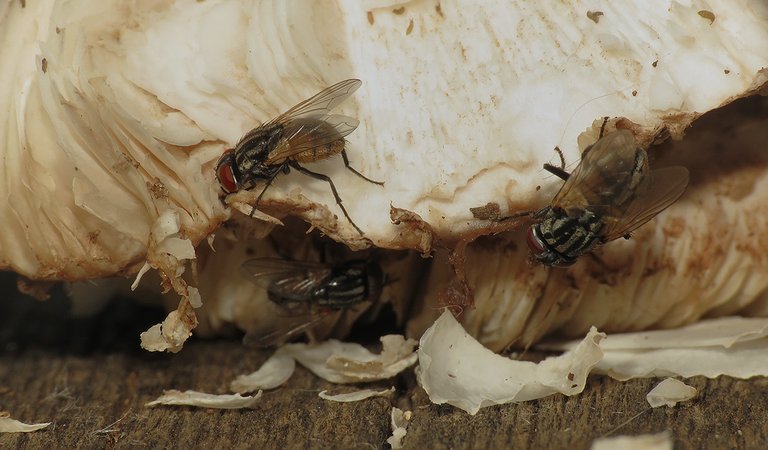
... but now ...
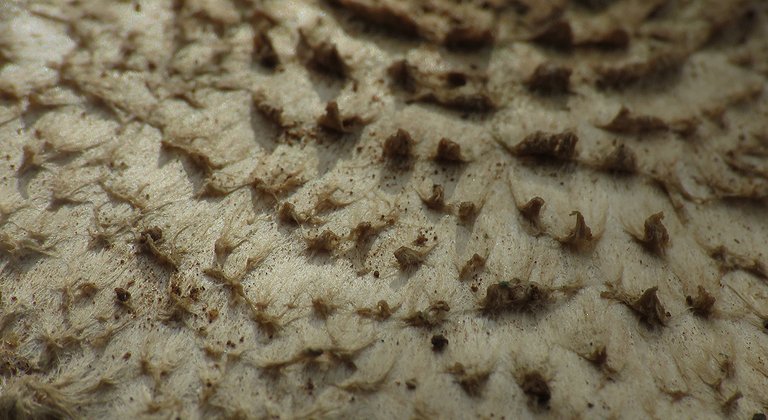
... is time to get a break from these annoying flies that were buzzing around my head and crawling around my nose and eyes, with this macro look at one of those three mushrooms that were still standing.
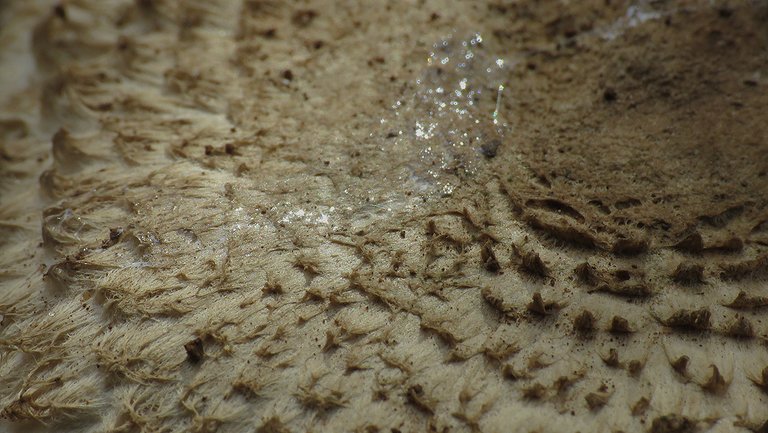
I saw some shiny slime on one of the shaggy caps. A slug or a snail probably passed there at night or early in the morning.
Wikipedia states that this species, the Musca domestica: Is believed to have evolved in the Cenozoic Era, possibly in the Middle East, and has later spread all over the world as a commensal of humans.
Females lay batches of about a hundred eggs on decaying organic matter such as food waste, carrion, or feces.
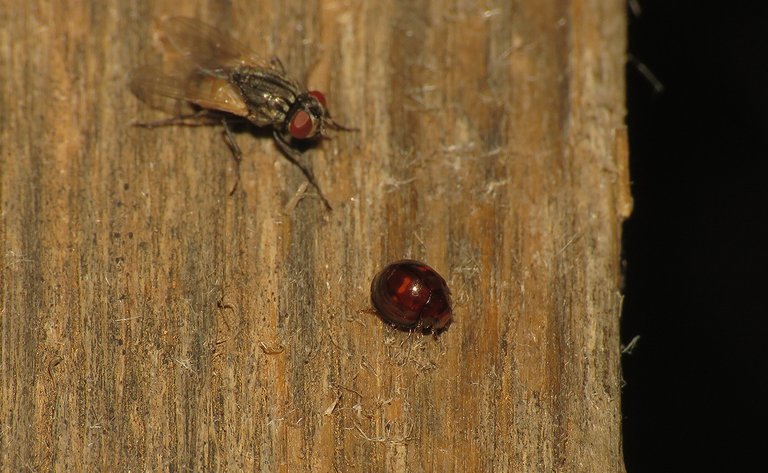
At one point, while I was photographing the fly, a small ladybug passed through the scene. This is the Chilocorus bipustulatus, a beetle from the Coccinellidae family.
Adult houseflies normally live for two to four weeks but can hibernate during the winter which can prolong their adult existence for months.
In their adult life, these flies feed on a variety of liquid or semi-liquid substances, as well as solid materials which have been softened by their saliva.
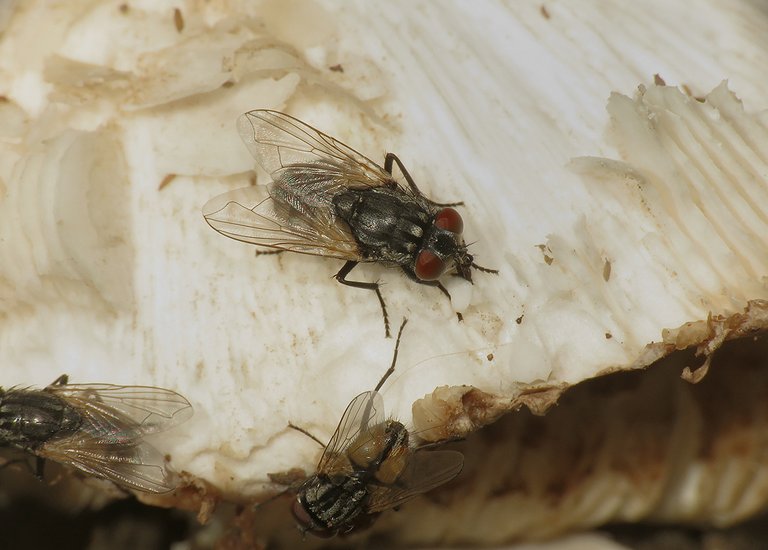
And that's it. The post ended up being more about insects than mushrooms, but since everything was happening around the shaggy parasols, it can fit the Fungi Friday, I think.

The following links will take you to the sites with more information about the protagonists of this post. I found some stuff about them there.
https://en.wikipedia.org/wiki/Shaggy_parasol
https://www.google.com/search?q=Ceratophysella&sxsrf=ALiCzsZQknvsKx1w-T-tzUJgZ41P_WVpHw:1667591679925&source=lnms&tbm=isch&sa=X&ved=2ahUKEwjdidmNp5X7AhXH_7sIHWFIBugQ_AUoAXoECAIQAw&biw=1669&bih=648&dpr=1
https://mdc.mo.gov/discover-nature/field-guide/springtails
https://en.wikipedia.org/wiki/Housefly
https://en.wikipedia.org/wiki/Chilocorus_bipustulatus
THE PHOTOGRAPHS ARE MY WORK - THE END.
